The Future of MarTech Includes AI and ML
Martech platforms, including marketing automation, and specifically Oracle Eloqua, are rolling out more and more artificial intelligence (AI) and machine learning (ML) tools and features as organizations begin to fully embrace and adopt AI and ML to gain a long-term competitive advantage.
The power of artificial intelligence and machine learning is that they allow marketers to cut through the noise in data, surface clear, actionable insights in real-time and at scale, and then quickly act upon them in an automated cross-channel way. Ultimately, it gets us closer to marketing’s holy grail of being able to consistently send the right message to the right person at the right time through the right channel.
Artificial intelligence and machine learning produce better experiences for leads and customers, improved business performance, and increased brand trust. According to the 2021 State of Marketing AI Report and global survey, 40% reported gaining more actionable insights from the data they collected, and 41% reported an increase in revenue and business performance, simply by utilizing AI and ML in their marketing campaigns. So, it’s not just about gaining insight and getting smarter, it’s also about increasing your bottom line.
What does this look like in practice?
Well, let’s look at five AI and ML features that are part of the Oracle Eloqua Advanced Intelligence Cloud Service offering.
1. Fatigue Analysis
What is it?
An AI-driven algorithm that analyzes email engagement over time and assigns a fatigue level: undersaturated, just right, saturated, or oversaturated. The fatigue level is written to a contact field and automatically updated by the AI.
How can I use it?
You can use it in segments. If for example, you have a re-engagement campaign, pull in contacts that are undersaturated.
You can use it in your campaign orchestration. In a campaign, you can, for example, for contacts that are undersaturated, send them down path A which has a decreased time between emails-sends. While path B contains contacts that are saturated or oversaturated and has an increased time between email sends giving them a minute to hang out and engage with other pieces of content. Finally, you would have the default, path C, for contacts that are just right.
You can also use it for dynamic content and personalization. For example, a different message can be sent in emails based on their level of fatigue.
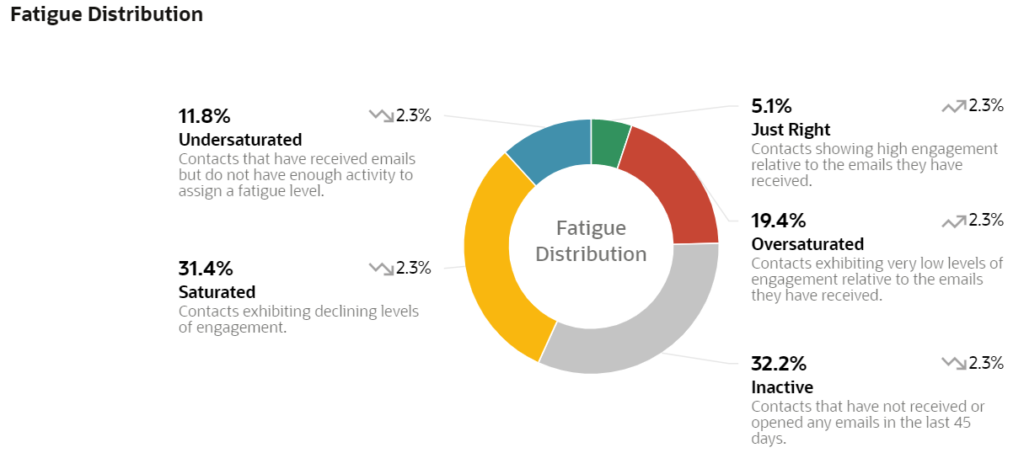
2. Send Time Optimization
What is it?
Optimize the time of day and/or day of the week an email is sent for each contact based on that contact’s past open email engagement.
How can I use it?
For me, Sunday is a good time to catch up on marketing newsletter emails in my inbox and get ready for Monday morning. Eloqua knows this about me and if I’m in your newsletter campaign, the send time optimization feature will hold off on sending that email to me until Sunday afternoon making it more likely that I’m going to see it first and open it. At the same time, someone else in the campaign might read newsletters Monday morning, so Eloqua will hold their send until then.
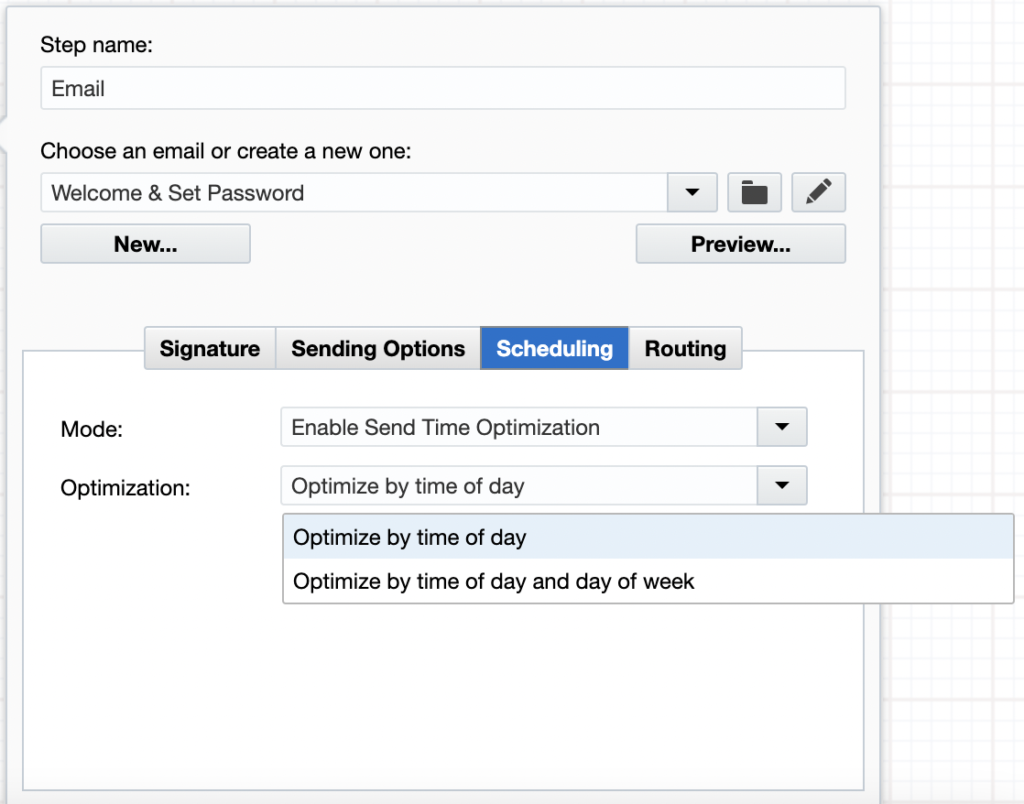
3. Subject Line Optimization
What is it?
Provides an above-average or below-average prediction for your subject line in the email editor based on how past subject lines have performed.
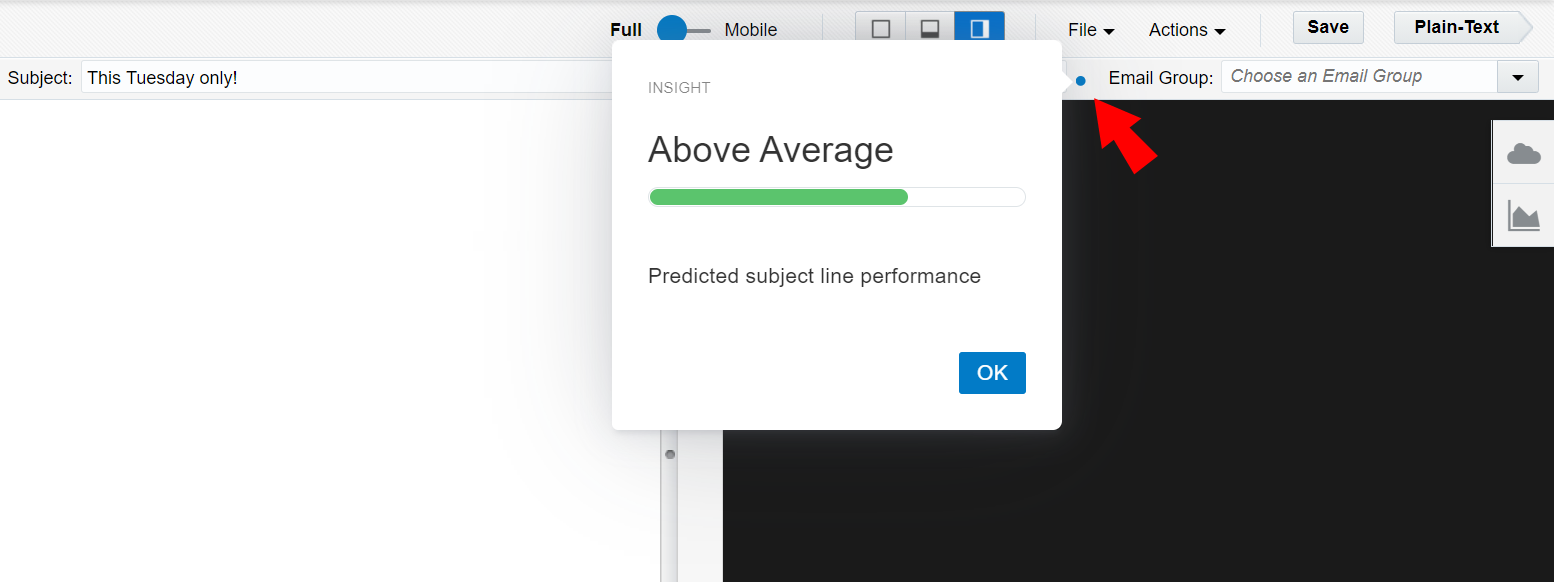
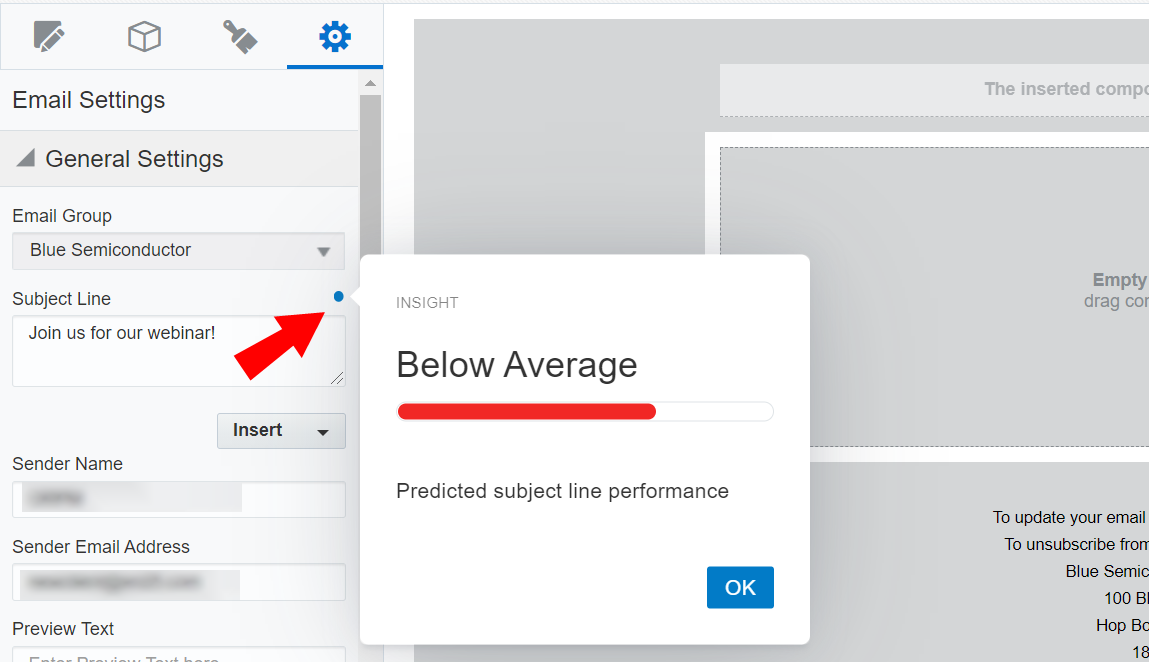
How can I use it?
You can optimize your subject line before sending the email. In combination with A/B testing, you can cut down the time on subject line testing time. It is an easy way to get a little bit smarter about your subject lines and tune the messaging to increase engagement.
4. Predictive lead scoring
What is it?
An ML-driven tool that can help to predict based on past opportunities within your instance when a lead is ready to convert. It looks to understand what successful conversions have in common by analyzing different attributes such as geography, industry, and engagement patterns.
How can I use it?
It can be used the same as any other lead scoring model you have active in your instance. Use it in segments to pull contacts into a bottom-of-funnel campaign that is almost ready to convert.
Use the score in dynamic content to help drive personalization effort by displaying a different CTA in a nurture campaign for contacts with a higher score.
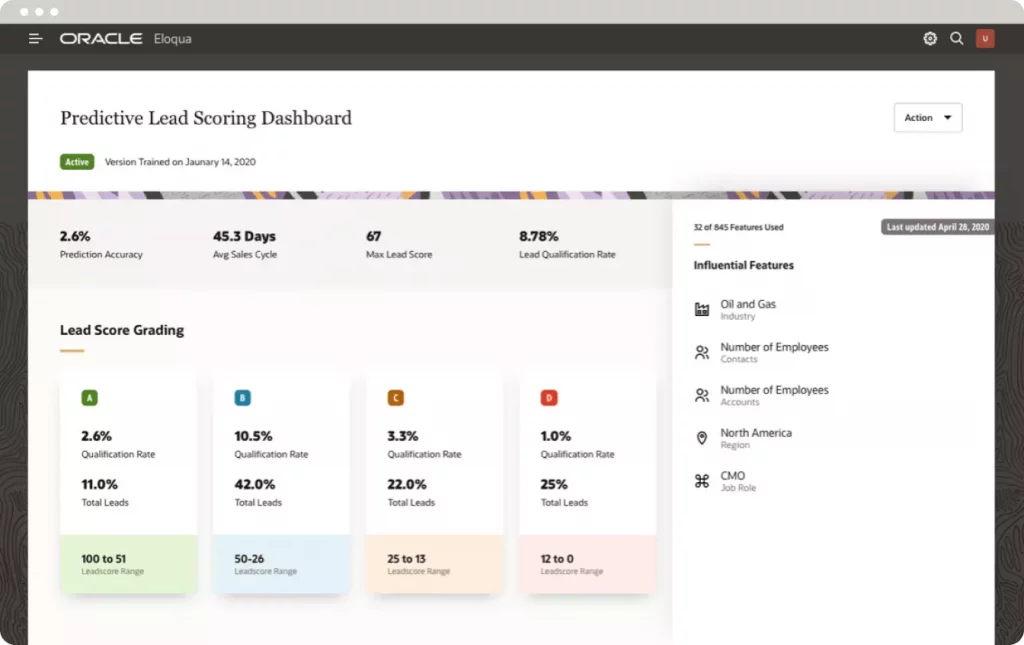
5. Account Engagement Score
What is it?
Like a lead score, the Account Engagement Score quantifies the level of engagement the contacts of an account have had with your brand. It is a numeric value on a scale from 0 to 100, the higher the score, the more engaged.
How can I use it?
The main use is in assisting with the enablement of ABM strategies and provides a clear view of which accounts are engaging with your brand.
As the score is written to an account field, you can use it for campaign orchestration to move contacts of a particular account to a later stage nurture campaign.
To drive personalization efforts, use dynamic content based on the account score to display a different offer for contacts of a less engaged account in an email and on an Eloqua landing page.
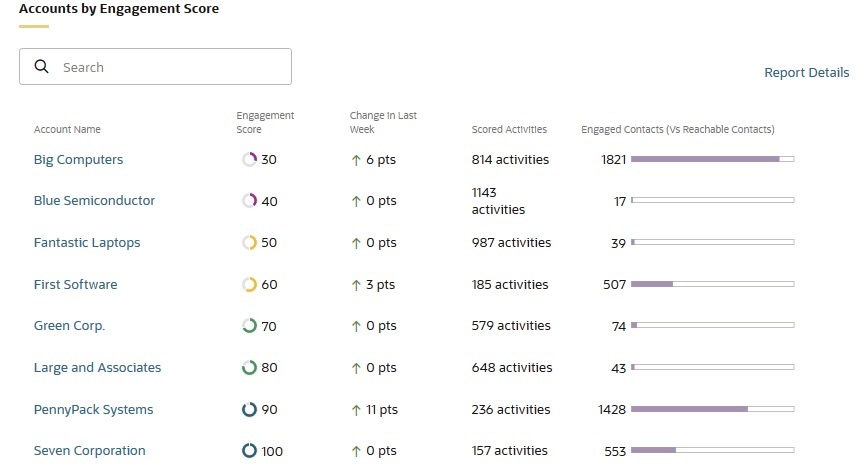
Now It’s Time to Test and Plan
These are just a few basic examples of how you can utilize these tools in your campaigns. Remember to start slow at first. Once you get a good sense of how each tool works, remember to think about and plan how you are going to scale. If you have more questions about these tools and how to use them or about marketing technology and marketing operations in general, drop us a line.


